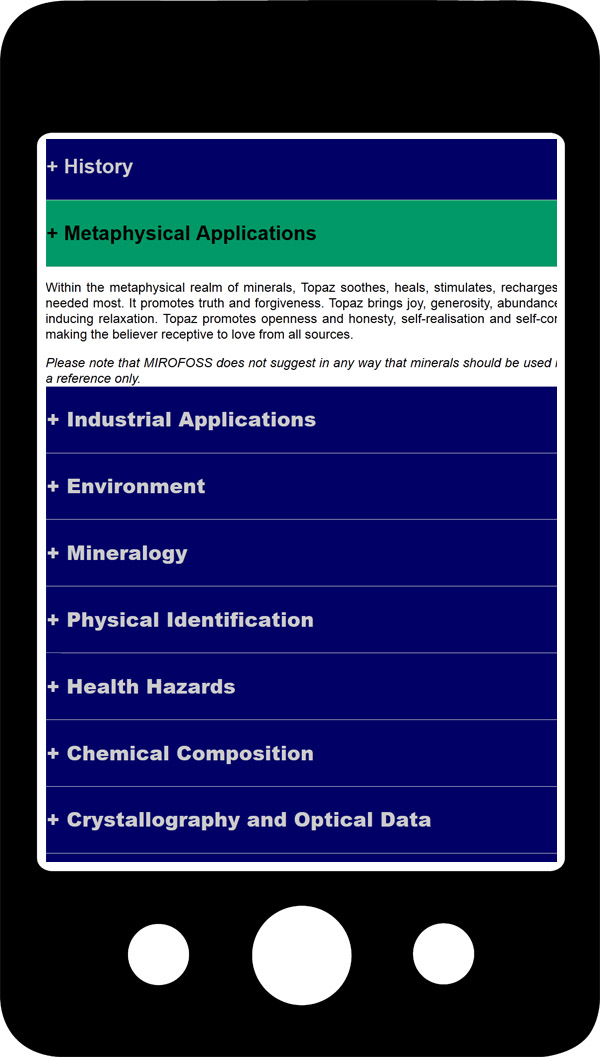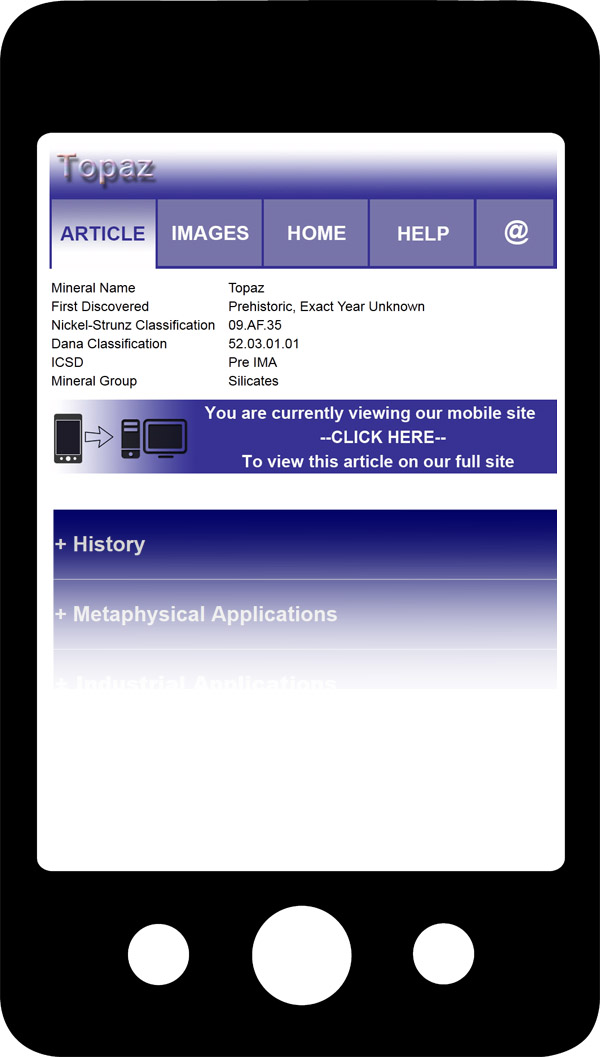Through-out the research, design, and development of MIROFOSS, care has been taken to ensure all pages within the database follow the same format. All mineral article toolbars and other colour schemes are shown in various shades of blue. Each mobile article has a top toolbar which is located at the top of the screen. Information in each article makes use of collapsible menus to save time looking for information, as well as reduces bandwidth. If further assistance is required, please -contact us-. .
 |
|
+ The history section of each article contains relevant information about the mineral in question. Details about the history and discovery of the mineral species can be found here as well as the history of how the mineral received it's current name, who discovered it and any common misinformation about the species |
+ Metaphysical Applications is a pseudoscientific aspect of minerals and how they can help the human mind, body, and spirit. |
+ The industrial applications section contains information about the current mainstream uses for the mineral species. |
+ Environment describes where the mineral is naturally formed and where the best places may be to look for the mineral species. |
+ In the mineralogy section of each article, information is given about the geographical locations where notable occurrences have been found. This section also contains any world records for size and shape of the mineral, as well information about common crystal structure, habit, and impurities. |
+ The table shown in the physical identification section shows various properties of the mineral species which can be observed without the aid of expensive diagnostic tools. Many aspects of physical identification can be viewed simply by observing, touching, and scratching the mineral surface. |
+ Health Hazards list any cautions or dangers about a mineral species in relation to human health as well as the environment and the affect the mineral may have on other objects around it. |
+ The chemical composition section in each article lists information that you would not be able to normally obtain through simple observation. The image located in most chemical composition sections shows the crystal structure of how the base elements of a mineral come together to form a single unit cell of a mineral specimen. |
+ The section related to crystallography and optical data shows a table with relevant information about the mineral's crystal system. The table also gives optical data which mostly relates the the affect light has when it is reflected by or passed through a mineral crystal. In most cases an image showing the structure of the mineral as well as a colour chart showing birefringence is provided. |
+ Onomastics is the termed used to describe proper words and the relations of those words to language. The first part of the onomastics section lists any other terms or names which can be used to describe the mineral species. By clicking the the alternate name, you can access information about the name. Directly underneath the alternate names, is a list of varieties of the mineral species. These varieties are still classified as the mineral species but because of their specific characteristics, they have their own unique name and information. By clicking on a variety name, you can access information about that specific mineral variety. A list of mineral translations is provided to assist people who do not use English as their first language. This list may also be helpful for persons visiting another country wishing to enquire about mineral samples or locations. thirty-three languages have been selected to use in the table. If a translation in the table is blank; There is no word in that language to describe the mineral. |
+ The geographical occurrences section shows a map where major documented concentrations of the mineral have been discovered and or exploited. These areas are shown in red on the map. Oceans and major bodies of water are shown in blue. |
+ The reference section shows where the information on the mineral article was researched from as well as the last time the page was updated. |
| |



